

In the 1820s Joseph Niepce created the earliest crude method of photography. Niepce had invented a contact photocopying method, then in 1826-7 he first demonstrated his 'Heliography' using a Camera Obscura containing a pewter slab coated with Butumen of Judea. A days exposure of the 'plate' of the urban view from his window sill allowed bright parts of the image projected onto it to harden the coating, which when subsequently washed with a petroleum mixture left a rudimentary image of clinging hardened Bitumen against the metal. This early copy shows the image far better than in its present condition.
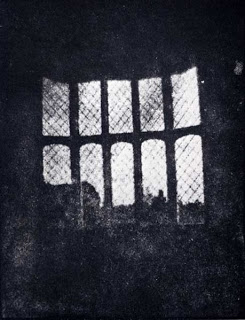
This 1835 photo by William Henry Fox Talbot was the first made using his invention of a photographic 'negative' from which prints were made, both then on paper. Later use of film would eventually make this method the dominant method of chemical photography.
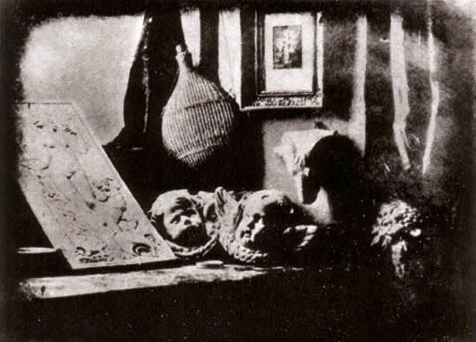
In January 1839, after four years of refining the technique, Louis Daguerre announced the invention of the Daguerreotype. It became the first widely used photographic process.
A mirror polished silver plated copper sheet was coated by the fumes of halogen, iodine, bromine or chlorine and then exposed in the camera for a few minutes. The image was then developed with mercury fumes. The product of this rather toxic process was a mirror surface with the image detail as an unreflective portion of the surface, which in the final product was protected under glass.
This is the earliest Daguerreotype, dating from 1837.
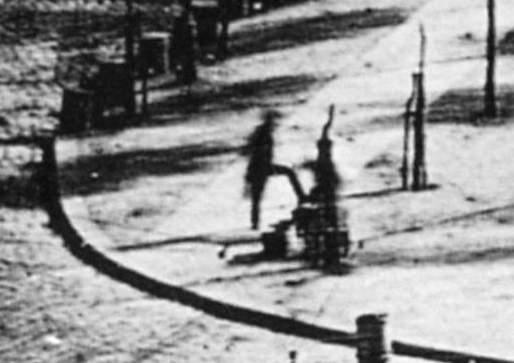
This enlargement of part of a detailed 1838 Daguerreotype view of Paris contains the first human beings to be photographed, a man having his shoes shined by another. Holding still enough for some minutes during the long exposure unknowingly earned those anonymous men this distinction.
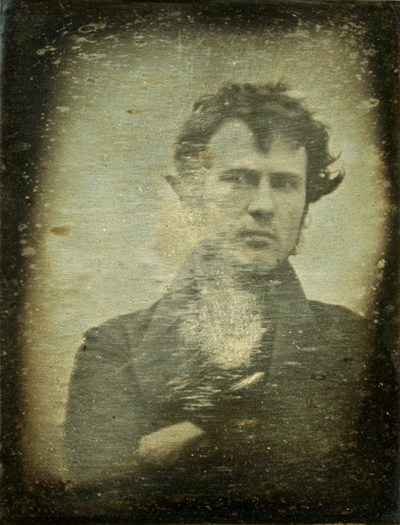
This 1839 self portrait of Robert Cornelius is the earliest close up portrait photo.
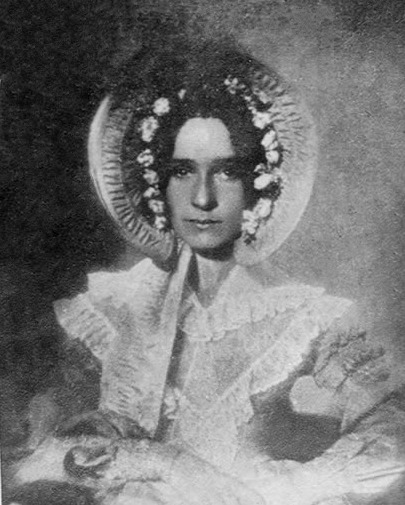
In 1840 Dorothy Catherine Draper became the first woman to have her photographic portrait made. She was the sister of John William Draper, who was also to take the first photographs of the Moon that year.
Various methods subsequently came and went to achieve photography, with glass plates, film chemistry advances and shorter exposure times happening along the way. A major milestone was the 1884 introduction of flexible film by George Eastman. Since then black and white and color film types have come and gone, and digital cameras have since taken over.
Next page: the earliest color photography methods.